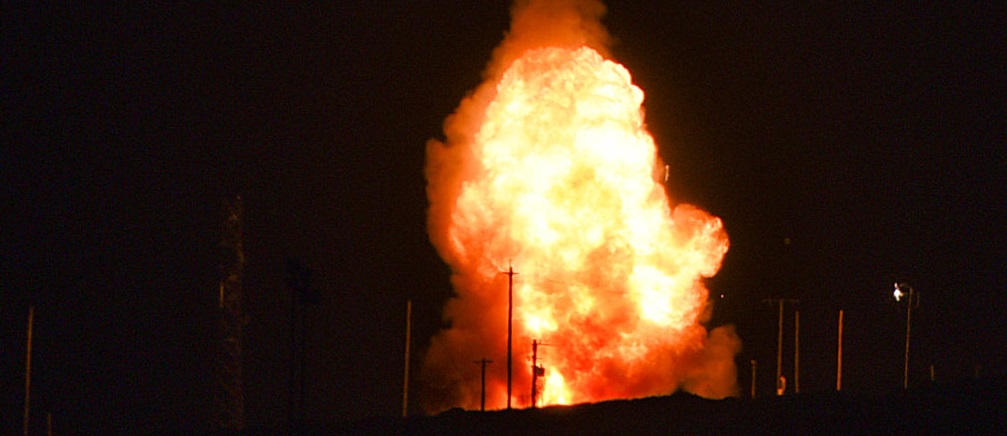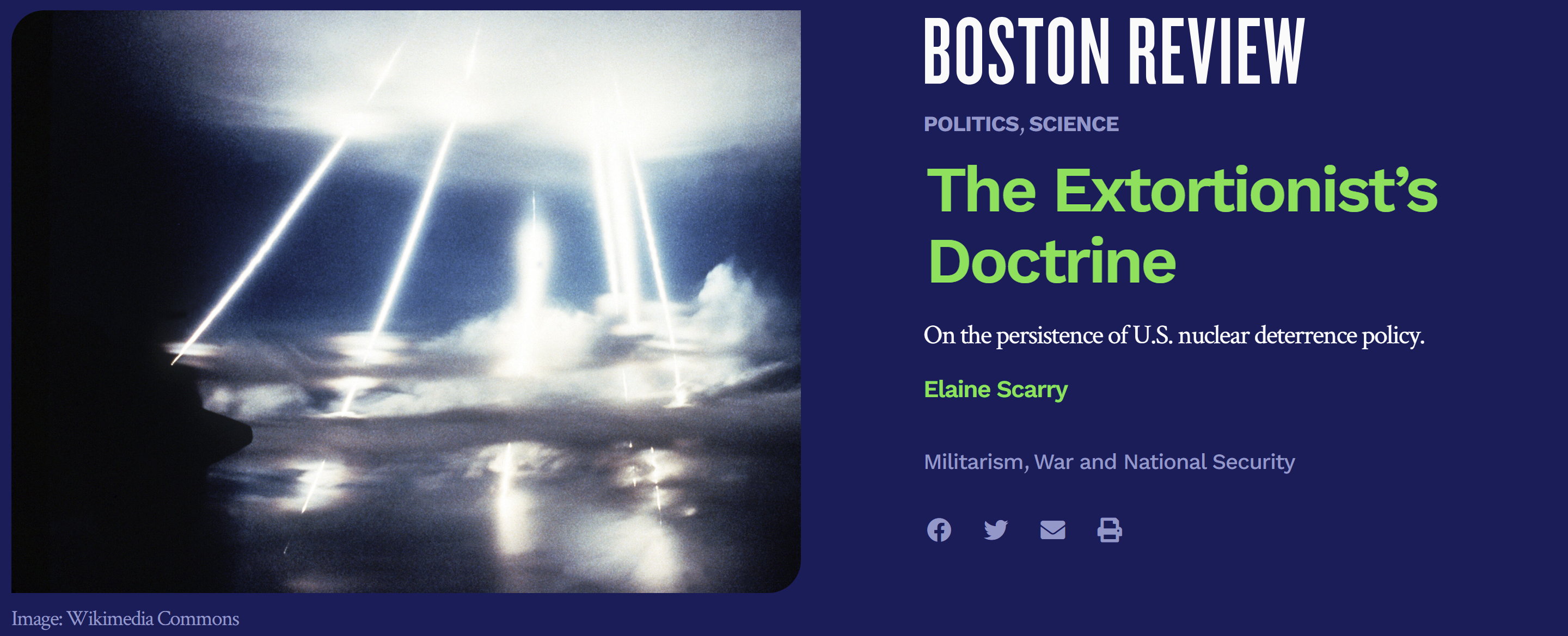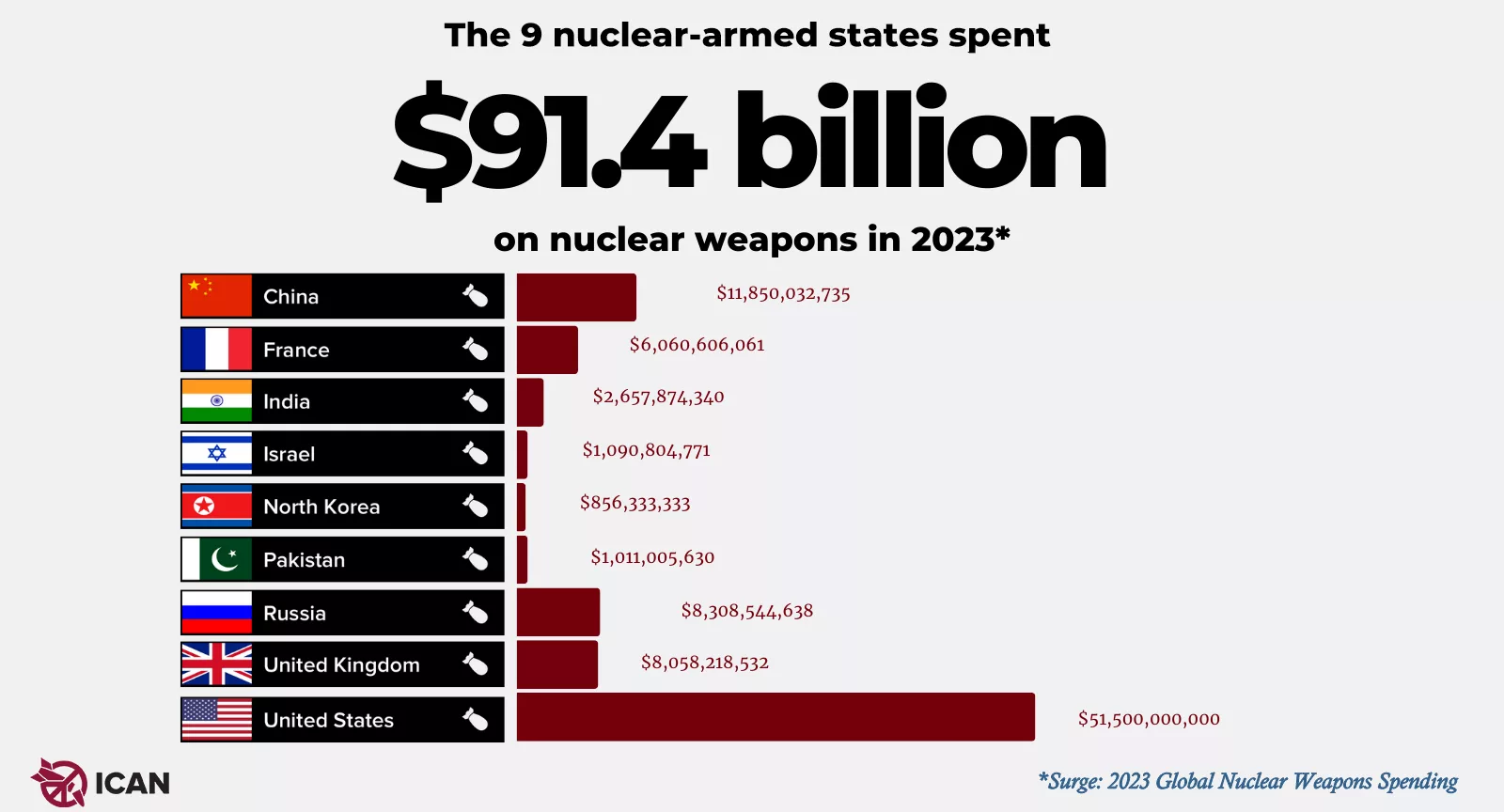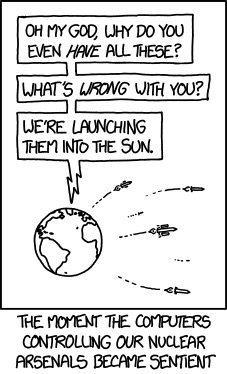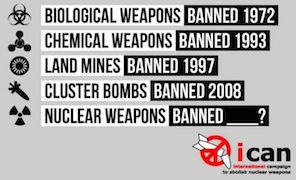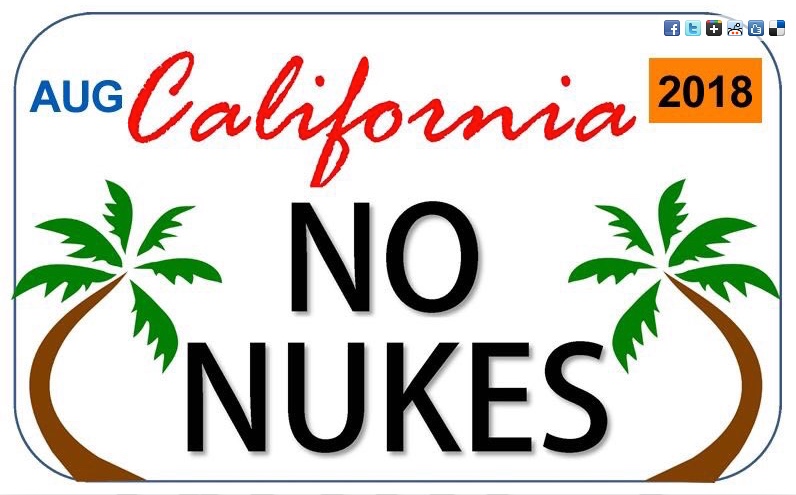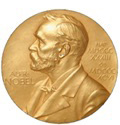Recent News
The U.S. Nuclear Policy of Deterrence: What if it Fails?
The U.S. nuclear strategy of deterrence “aims to prevent an adversary from launching a nuclear weapon by assuring that any first strike will be followed by a retaliatory second strike, whose effects will equal or exceed the original damage and may eliminate the adversary altogether.” From a purely theoretical standpoint, its premise is simple: the threat of overwhelming retaliation should prevent adversaries from launching a first attack. As illuminated in an insightful analysis in the Boston Review, current deterrence policies use perpetual threats of annihilation as a means of coercion. Our most “successful” solution so far to the threat of catastrophic nuclear war has been a tool of extortion, rather than genuine security measures such as binding arms control and nonproliferation agreements.
Deterrance is “framed wholly as defensive and preventative (and from day to day, largely successful in deflecting our attention from the actual first use stance the country has had for nearly eighty years).” [Boston Review] But what if this strategy fails? What if deterrence doesn’t work as intended?
The policy of deterrence assumes that rational actors will always act in their own self-interest to avoid nuclear war.
BOSTON REVIEW: The Extortionist’s Doctrine
“Thus massive second strike—the key to deterrence defined as the practice of preventing nuclear war by discouraging a first strike—somersaults into the perceived position of a first strike.
‘The bar of deterrence,’ [former head of US Strategic Command] Butler writes, ‘ratchets higher, igniting yet another cycle of trepidation, worst-case assumptions and ever-mounting levels of destructive capability.'”
By Elaine Scarry, The Boston Review | October 2024 bostonreview.net
The key structure of the doctrine of nuclear deterrence is audible in the September 4, 2024, speech by U.S. Deputy Under Secretary of Defense Cara Abercrombie: “Any nuclear attack by the DPRK against the United States or its allies and partners is unacceptable and will result in the end of that regime.” The doctrine, which the United States has embraced since the Cold War, aims to prevent an adversary from launching a nuclear weapon by assuring that any first strike will be followed by a retaliatory second strike, whose effects will equal or exceed the original damage and may eliminate the adversary altogether. This annihilating reflex of deterrence is equally audible in the quiet words of the Department of Defense in its web page on “America’s Nuclear Triad,” its sea-based, land-based, and air-based delivery platforms: “The triad, along with assigned forces, provide 24/7 deterrence to prevent catastrophic actions from our adversaries and they stand ready, if necessary, to deliver a decisive response, anywhere, anytime.”
Framed wholly as defensive and preventative (and from day to day, largely successful in deflecting our attention from the actual first use stance the country has had for nearly eighty years), deterrence would almost have the aura of peacekeeping, were it not the mental platform undergirding our fourteen Ohio-class submarines (each able to singlehandedly destroy one of Earth’s seven continents), four hundred land-based ICBMs, and sixty-six B-52 and B-2 stealth bombers.
Although the physical act of unbuilding the nuclear architecture is easily within reach—it would take at most four weeks to dismantle all the nuclear triggers throughout the world, a decisive because disabling first step—the mental architecture of deterrence is the major impediment to doing so.
Does the United States Need More Nuclear Weapons?
The United States is estimated to have roughly 3,700 warheads in its active arsenal. This includes 1,670 thermonuclear warheads deployed on 660 powerful long-range missiles on land and at sea or available for delivery on strategic bombers. There are also another 100 tactical nuclear bombs that can be delivered on shorter-range aircraft, according to independent estimates.5 The use of a fraction of these weapons, many primed for launch within minutes, would lead to mass destruction on an unprecedented global scale.
Contrary to the hype, more nuclear weapons would not improve, on balance, the U.S. capability to deter nuclear attack. In fact, significant increases in the U.S. deployed nuclear arsenal would undermine mutual and global security by making the existing balance of nuclear terror more unpredictable and would set into motion a counterproductive, costly action-reaction cycle of nuclear competition.
By Daryl G. Kimball, Arms Control Today | July/August 2024 armscontrol.org
The experience of the Cold War proves that nuclear arms racing produces only losers and increased risks for everyone.

Nevertheless, following more than a decade of deteriorating relations between the United States and its main nuclear rivals, dimming prospects for disarmament diplomacy, and major nuclear weapons modernization efforts, China, Russia, and the United States are now on the precipice of a dangerous era of unconstrained nuclear competition. Concern in U.S. national security circles about Chinese and Russian nuclear capabilities has grown since Russia’s full-scale invasion of Ukraine effectively shut down the U.S.-Russian nuclear risk reduction and arms control dialogue. The Kremlin has rejected the White House proposal to negotiate a new nuclear arms control framework to replace the New Strategic Arms Reduction Treaty (New START), which expires on February 5, 2026.1 China has declined U.S. offers to continue bilateral discussions on reducing nuclear risk and on nuclear postures.2
Moreover, as the U.S. intelligence community forecasts that China could amass as many as 1,000 nuclear weapons by 2030, with several hundred of them deployed on a larger force of intercontinental ballistic missiles (ICBMs), some members of the nuclear weapons establishment, leading members of Congress, and Biden administration officials have suggested that the massive U.S. arsenal may not be sufficient to deter two “near peer” nuclear rivals.3 China is currently estimated to have some 500 nuclear weapons and 310 long-range, nuclear-armed ballistic missiles.4
Guterres warns humanity on ‘knife’s edge’ as AI raises nuclear war threat
UN secretary general makes plea for nuclear states to agree on mutual pledge not to be first to use nuclear weapons
“The UN secretary general, António Guterres, has warned that the spread of artificial intelligence technology multiplies the threat of nuclear war, and that humanity is now ‘on a knife’s edge’ as dangers to its existence coalesce.”
By Julian Borger, The Guardian | June 7, 2024 theguardian.com
Guterres’s warning is due to be shown on a recorded video to be played on Friday morning at the annual meeting of the US Arms Control Association (ACA) in Washington.
In the video, the secretary general makes his most impassioned plea to date for the nuclear weapons states to take their non-proliferation obligations seriously, and in particular, agree on a mutual pledge not to be the first to use nuclear weapons.
“The regime designed to prevent the use, testing and proliferation of nuclear weapons is weakening,”
Guterres says in the recorded message, in a warning that comes with some 600 days to go before the expiry of the 2010 New Start accord between the US and Russia, the last remaining agreement limiting the strategic arsenals of the two nuclear superpowers.
U.S. Considers Expanded Nuclear Arsenal, a Reversal of Decades of Cuts
“China’s expansion and Russia’s threats of using nuclear weapons in Ukraine and in space have changed a U.S. drive to reduce nuclear weapons.”
By Julian E. Barnes and David E. Sanger, New York Times | June 7, 2024 nytimes.com
A senior Biden administration official warned on Friday that “absent a change” in nuclear strategy by China and Russia, the United States may be forced to expand its nuclear arsenal, after decades of cutting back through now largely abandoned arms control agreements.
The comments on Friday from Pranay Vaddi, a senior director of the National Security Council, were the most explicit public warning yet that the United States was prepared to shift from simply modernizing its arsenal to expanding it…
New information tool on nuclear weapons seeks to identify the next arms control strategies
“The sum of this data shows a familiar, albeit distinctly important, pattern: As nuclear weapon technologies surged forward, the world entered uniquely dangerous periods in which crises erupted despite a plethora of different nuclear capabilities. Crisis after crisis, steps to control an unchecked arms race were found to be both stabilizing and mutually beneficial—only to be discarded or violated, tempting disaster.”
By Andrew Facini, Bulletin of the Atomic Scientists | December 4, 2023 thebulletin.org

The way countries view nuclear weapons is shifting. As past arms control measures have ended or decayed, the United States, Russia, and China are investing heavily (again) in their nuclear arsenals, pursuing new capabilities and discarding constraints once seen as fundamentally stabilizing.
For those of us seeking to cultivate nuclear policies geared toward enhancing strategic stability, the current trend reflects a worrying loss of perspective—a forgetting of the hard-earned lessons of the Cold War. To help put today’s trends in their historical context, at team of the Council on Strategic Risks (CSR) developed a new visualization tool and information system that maps every type of nuclear weapon fielded by the five nuclear weapons states (P5) under the Nuclear Non-Proliferation Treaty (NPT)—China, France, Russia, the United Kingdom, and the United States—from their inception to present day.
Launched last week, the Nuclear Weapons Systems Project seeks a “qualitative rethink” by providing a curated data source for all major nuclear delivery systems ever deployed. By seeing more easily what has changed and when, users can better identify the benefits of states’ long trajectory of narrowing the types of nuclear capabilities in the world, understand the risks of a new expansion of nuclear capabilities, and develop ways to de-risk the current situation and prevent future security crises.
Russia’s Self-Destructive Move to De-Ratify the CTBT
“A [US] State Department spokesman said the Russian move “needlessly endangers the global norm against nuclear explosive testing,” and that the United States remains committed to observing a moratorium.”
By Daryl Kimball, Tony Fleming, and Kathy Crandall Robinson, ARMS CONTROL NOW | October 17, 2023 armscontrol.org
As with other critical arms control agreements, the 1996 Comprehensive Nuclear Test Ban Treaty (CTBT) is under threat due to inattention, diplomatic sclerosis, and worsening relations between nuclear-armed adversaries.
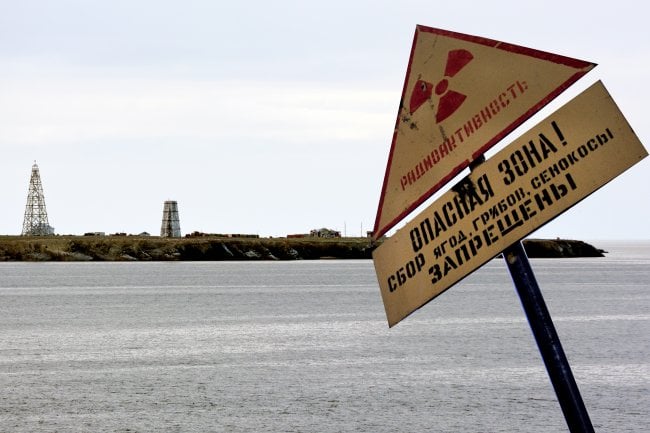
Disturbingly, but not surprisingly, Russian President Vladimir Putin has given members of the Russian Duma the green light to “un-ratify” the CTBT, ostensibly to “mirror” the posture of the United States toward the treaty and somehow pressure the United States to ratify the pact. Such a move would be a “self-defeating own goal,” that would set back efforts to bring the CTBT into force and raise questions about Russia’s intentions.
Continue reading
U.S. Strategic Posture Commission Ratchets Up Nuclear Arms Race
FOR IMMEDIATE RELEASE, October 12, 2023
Jay Coghlan – 505.989.7342 | Email
Santa Fe, NM – Today, America’s Strategic Posture, The Final Report was released by the Congressional Commission on the Strategic Posture of the United States. In its own words:
“The Congressional Commission on the Strategic Posture of the United States was established by the Fiscal Year (FY) 2022 National Defense Authorization Act (NDAA), and concludes that America’s defense strategy and strategic posture must change in order to properly defend its vital interests and improve strategic stability with China and Russia. Decisions need to be made now in order for the nation to be prepared to address the threats from these two nuclear-armed adversaries arising during the 2027-2035 timeframe. Moreover, these threats are such that the United States and its Allies and partners must be ready to deter and defeat both adversaries simultaneously.”
Return of US nuclear weapons to UK would be an escalation, says Russia
Moscow says it would respond with ‘countermeasures’, after US air force budget item hinted at possible move
Julian Borger and Andrew Roth THE GUARDIAN | September 5, 2023 theguardian.com
The Russian foreign ministry has said Moscow will view any move to return US nuclear weapons to the UK as an escalation and will respond with “countermeasures” for its own security.
The foreign ministry spokesperson Maria Zakharova was responding to a report last week about an item in the 2024 US air force budget for building a dormitory at RAF Lakenheath in Suffolk for personnel on a “potential surety mission” – military jargon for nuclear safety and security. It raised the prospect of the return of US nuclear weapons to British soil for the first time in more than 15 years.
“If this step is ever made, we will view it as escalation, as a step toward escalation that would take things to a direction that is quite opposite to addressing the pressing issue of pulling all nuclear weapons out of European countries,” Zakharova said.
Abolishing Nuclear Weapons is a Moral Imperative
View Recording of the March 9th PDA CNM Community Gathering:
PDA CNM welcomed Archbishop John C. Wester, Archbishop of Santa Fe, and our own executive director of Nuclear Watch New Mexico, Jay Coghlan, to speak at their March 9, 2022 monthly gathering: “[Archbishop Wester's] courage in speaking out against the proliferation of nuclear weapons inspires us at PDACNM to follow his example and continue the fight against this peril, especially given the threat of a possible imminent war between two nuclear powers.
Jay Coghlan, executive director of Nuclear Watch New Mexico, has worked successfully against radioactive incineration at the Los Alamos National Lab, and in Clean Air Act, Freedom of Information Act and National Environmental Policy Act lawsuits against the Department of Energy. He prompted a 2006 independent study that concluded plutonium pits last at least a century, refuting the NNSA’s assertion that we “need” new-design nuclear weapons and expanded plutonium pit production.”
The Nuclear Ban Treaty
Overview
The U.N. Treaty
on the Prohibition of Nuclear Weapons
On 7 July 2017 – following a decade of advocacy by ICAN and its partners – an overwhelming majority of the world’s nations adopted a landmark global agreement to ban nuclear weapons, known officially as the Treaty on the Prohibition of Nuclear Weapons. It will enter into legal force once 50 nations have signed and ratified it.
Prior to the treaty’s adoption, nuclear weapons were the only weapons of mass destruction not subject to a comprehensive ban, despite their catastrophic, widespread and persistent humanitarian and environmental consequences. The new agreement fills a significant gap in international law.
It prohibits nations from developing, testing, producing, manufacturing, transferring, possessing, stockpiling, using or threatening to use nuclear weapons, or allowing nuclear weapons to be stationed on their territory. It also prohibits them from assisting, encouraging or inducing anyone to engage in any of these activities.
Why a ban?
A nation that possesses nuclear weapons may join the treaty, so long as it agrees to destroy them in accordance with a legally binding, time-bound plan. Similarly, a nation that hosts another nation’s nuclear weapons on its territory may join, so long as it agrees to remove them by a specified deadline.Nations are obliged to provide assistance to all victims of the use and testing of nuclear weapons and to take measures for the remediation of contaminated environments. The preamble acknowledges the harm suffered as a result of nuclear weapons, including the disproportionate impact on women and girls, and on indigenous peoples around the world.
The treaty was negotiated at the United Nations headquarters in New York in March, June and July 2017, with the participation of more than 135 nations, as well as members of civil society. It opened for signature on 20 September 2017. It is permanent in nature and will be legally binding on those nations that join it.
Nuclear weapons are the most inhumane and indiscriminate weapons ever created. That is why it is time to end them, before they end us.
Nuclear weapons are the most inhumane and indiscriminate weapons ever created. They have catastrophic humanitarian and environmental consequences that span decades and cross generations; they breed fear and mistrust among nations, as some governments can threaten to wipe out entire cities in a heartbeat; the high cost of their production, maintenance and modernisation diverts public funds from health care, education, disaster relief and other vital services. Banning these immoral, inhumane weapons under international law was a critical step along the path to ending them.
With the adoption of the UN Treaty on the Prohibition of Nuclear Weapons (TPNW) on July 7th, 2017, the world's majority took a critical step towards making that nuclear-weapon-free future a reality.
Nuclear Weapons Ban Treaty News & Updates
Nuclear Watch New Mexico and Santa Fe Archbishop John C. Wester Attend the Third Meeting of States Parties to the Treaty on the Prohibition of Nuclear Weapons
We had the honor of joining the Archbishop of Santa Fe, John Wester, in attending the third Meeting of States Parties to the Treaty on the Prohibition of Nuclear Weapons last week, March 3-7 in New York City. The archbishop gave mass to several different groups (see photos below) and spoke at the UN headquarters as part of Civil Society.
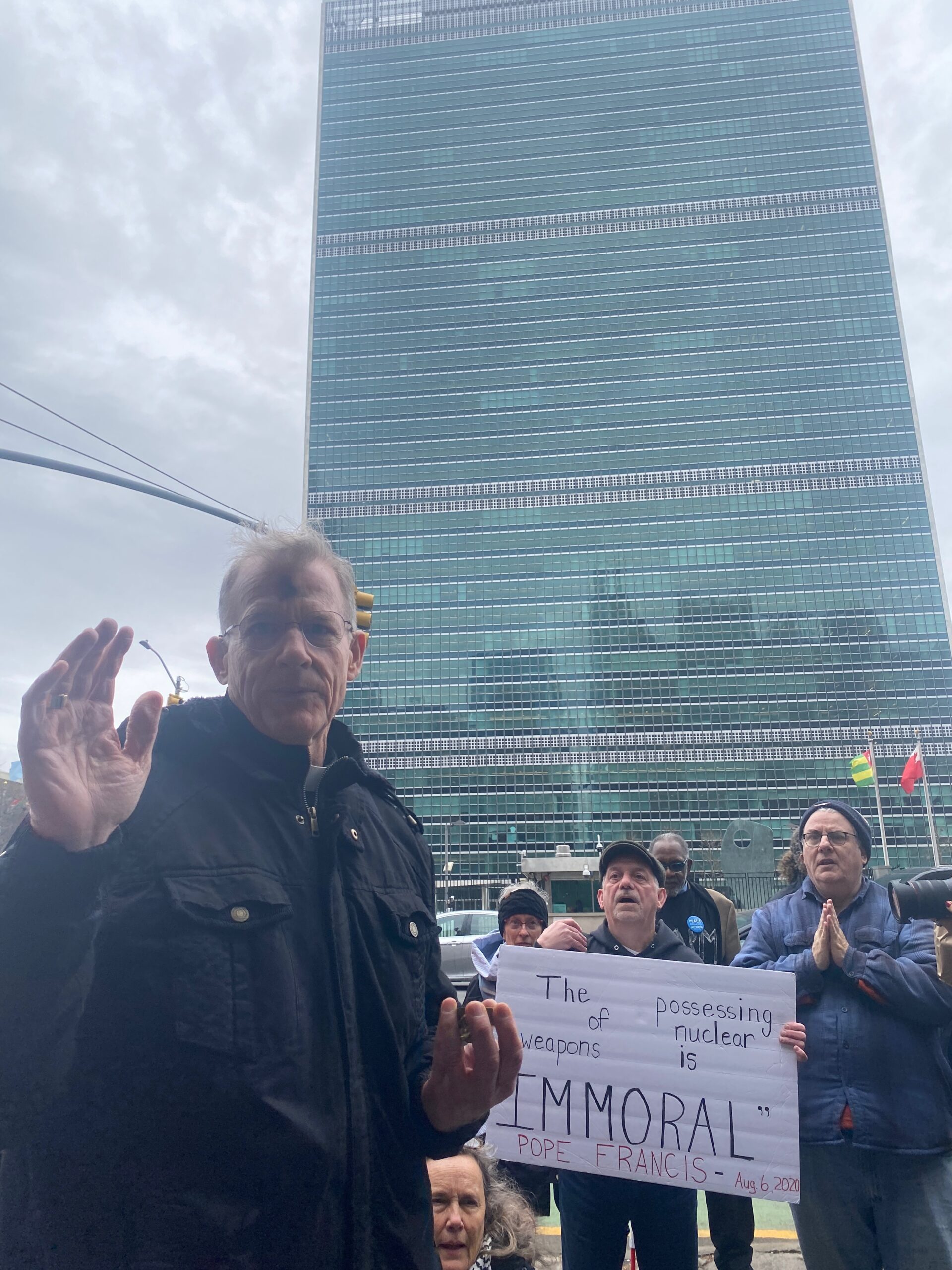
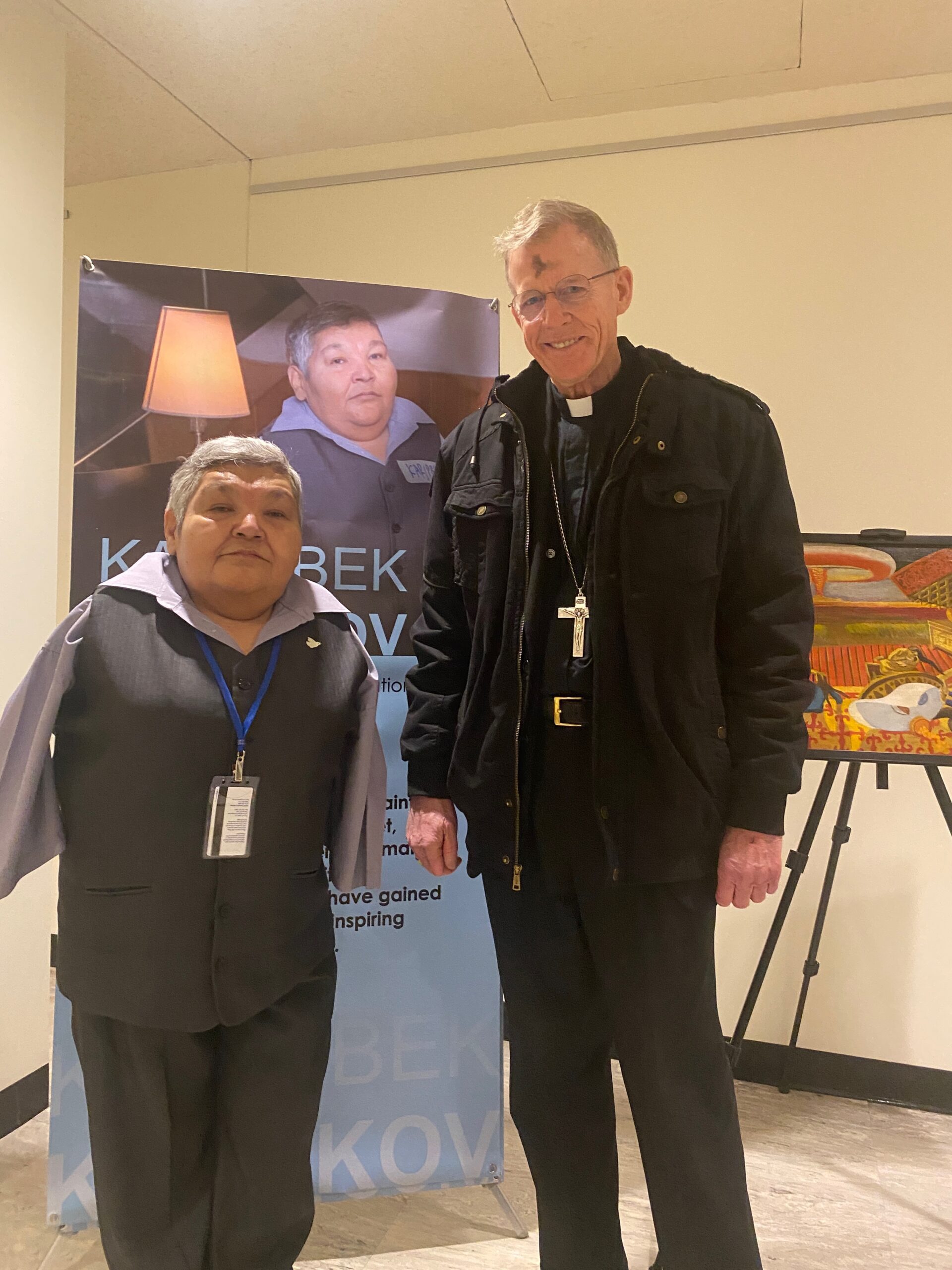
In New York City this week? Join Pax Christi members and friends at Mass with Archbishop John Wester (Santa Fe NM) on Tuesday, March 4, 6 pm, at the Church of Our Saviour, 59 Park Avenue at 38th Street. Use this link to RSVP. #TPNW #3MSP #nucleardisarmamentwww.dorothydayguild.org/WesterMass25
— Pax Christi USA (@paxchristiusa.bsky.social) 2025-03-03T16:35:50.942Z
ICAN: Global nuclear weapons spending surges to $91.4 billion
In 2023, the nine nuclear-armed states spent a combined total of $91,393,404,739 on their arsenals – equivalent to $2,898 a second. ICAN’s latest report “Surge: 2023 Global nuclear weapons spending” shows $10.7 billion more was spent on nuclear weapons in 2023 than in 2022.
Read the report
Download the Executive Summary
International Campaign to Abolish Nuclear Weapons (ICAN) | June 17, 2024 icanw.org
Who spent what on their nuclear arsenal in 2023?
In 2023 China, France, India, Israel, North Korea, Pakistan, Russia, the UK and US spent a combined $91.4 billion on their nuclear arms, which breaks down to $173,884 per minute, or $2,898 a second. The United States’ share of total spending, $51.5 billion, is more than all the other nuclear-armed countries put together and accounts for 80% of the increase in nuclear weapons spending in 2023. The next biggest spender was China which expended $11.8 billion with Russia spending the third largest amount at $8.3 billion. The United Kingdom’s spending was up significantly for the second year in a row with a 17% increase to $8.1 billion.
$387 billion in 5 years
“Surge” is the 5th edition of ICAN’s global nuclear weapons spending report. In the last 5 years, $387 billion has been spent on nuclear weapons, with the yearly spending increasing by 34% from $68.2 billion to $91.4 billion per year, as all nine nuclear-armed states continue to modernise, and in some cases expand, their arsenals. Alicia Sanders-Zakre, co-author of the report [and NukeWatch’s summer 2019 intern] noted:
“The acceleration of spending on these inhumane and destructive weapons over the past five years is not improving global security but posing a global threat.”
Second meeting of states parties agrees nuclear deterrence is the problem
“A joint statement endorsed by 26 nuclear affected community-led organisations, and supported by a further 45 allied organisations said ‘We have the right and responsibility to speak about what nuclear weapons really do… We call on States Parties to the TPNW to push relentlessly for its universalisation.’”
ICAN | UPDATES | December 1, 2023 icanw.org
N94 countries participated in the meeting as states parties or observers including some that currently endorse the use of nuclear weapons in their defence doctrines. These countries engaged in a robust and interactive debate during the week, adopting a political declaration and package of decisions.
Nuclear deterrence is a cause of global instability and insecurity
One of the adopted decisions included, for the first time ever, an agreement to work together to challenge the false narratives of nuclear deterrence. States parties mandated states, the International Committee of the Red Cross and ICAN and other stakeholders and experts, “To challenge the security paradigm based on nuclear deterrence by highlighting and promoting new scientific evidence about the humanitarian consequences and risks of nuclear weapons and juxtaposing this with the risks and assumptions that are inherent in nuclear deterrence.”
There remains an information gap between what would actually happen as a result of nuclear war and the policies of the nuclear-armed states and their allies, and efforts to bridge this gap are the primary responsibility of those whose policies include the use of nuclear weapons.
New evidence on the impacts of nuclear weapons demand action from the global community
New research was presented during the meeting as well, including that there is much greater understanding of the cascading effects on food supplies, the financial system and energy supplies that help us better predict the likely effects of nuclear detonations.
The Second Meeting of States Parties on the Prohibition of Nuclear Weapons
Since the invasion of Ukraine nearly two years ago, to the recent situation in Israel/Gaza, the risk of impending nuclear war has been a reality considered by many for the first time. As stated at a side event during the weeklong meeting of States Parties on the Prohibition of Nuclear Weapons (TPNW) held last week from November 27 to Decmber 1st, Hirotsugu Terasaki, Director General of Peace and Global Issues, Soka Gakkai International (SGI), warned that the wide-scale violence brought by these two events “continue to heighten the risk that nuclear weapons could actually be used.” This fear is made all the more tangible when considering also that earlier this month, the Putin announced Russia would be revoking its ratification of the Comprehensive Test Ban Treaty (CTBT), which Terasaki pointed out is a “serious setback for the cause of nuclear disarmament.”
As stated in the article, The Voices of Victims of Nuclear Weapons Testing, “these realities make convening the current Second Meeting of States Parties of the TPNW, which concludes December 1, all the more important and a crucial opportunity to revive momentum for nuclear disarmament and abolition.”
McGovern is first member of Congress to address UN about Nuclear Weapon Ban Treaty
“For some reason, we have a lot of the establishment that say it’s just a fact that we have to live with it,” McGovern said…“If we can’t reach our goal quickly, maybe we can engage in curtailing nuclear weapons.”
“Anything can happen if there’s the political will,”
By SCOTT MERZBACH, THE DAILY HAMPSHIRE GAZETTE | November 27, 2023 gazettenet.com
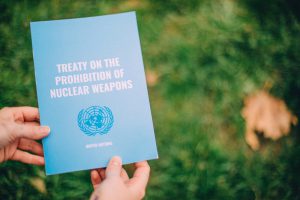 NORTHAMPTON — A treaty to eliminate nuclear weapons and ban anything associated with their development and manufacture has been ratified by 69 countries, with an additional 28 countries in the process of ratification, since the international agreement was signed in 2017.
NORTHAMPTON — A treaty to eliminate nuclear weapons and ban anything associated with their development and manufacture has been ratified by 69 countries, with an additional 28 countries in the process of ratification, since the international agreement was signed in 2017.
The United States, though, along with many of its allies and another eight nations that possess nuclear weapons, remain holdouts to the Treaty on the Prohibition of Nuclear Weapons, otherwise known as the Nuclear Weapon Ban Treaty.
For the first time on Monday, though, as the weeklong Second Meeting of State Parties to the Treaty on the Prohibition of Nuclear Weapons got underway at the United Nations in New York, a member of the U.S. Congress was present for the discussions.
ICAN IGTV
The international campaign to abolish nuclear weapons on instagram (@nuclearban) tackling some of the more technical legal questions of the treaty: what does entry into force mean, what happens now? Joined with experts, they dive into international law and the TPNW (without getting too technical!) through instagram chats to help break it all down.
View this post on InstagramTim Wright in conversation with Associate Professor Treasa Dunworth of the University of Auckland
A post shared by ICAN (@nuclearban) on
View this post on InstagramA post shared by ICAN (@nuclearban) on
View this post on InstagramA post shared by ICAN (@nuclearban) on
Nuclear Ban Treaty
Reaching Critical Will Twitter feed
Treaty on the Prohibition of Nuclear Weapons (PDF)
International Campaign to Abolish Nuclear Weapons
ICAN has posted a Flickr album of annotated photos of the UN Ban Treaty negotiations.
The Ban Treaty achievement was preceded by the three Conferences on the Humanitarian Impacts of Nuclear Weapons.
The Urgency of Banning Nuclear Weapons
Quotes
James Doyle
“Many citizens, scientists and laymen alike, view nuclear-weapons abolition as an essential milestone in the development of human civilization, a moral, ideological and practical campaign that could catalyze the transformation of international relations and improve the outlook for civilization at a critical time.”
All Nuclear Arms Reduction and Non-Proliferation Updates & Recent News
The U.S. Nuclear Policy of Deterrence: What if it Fails?
The U.S. nuclear strategy of deterrence “aims to prevent an adversary from launching a nuclear weapon by assuring that any first strike will be followed by a retaliatory second strike, whose effects will equal or exceed the original damage and may eliminate the adversary altogether.” From a purely theoretical standpoint, its premise is simple: the threat of overwhelming retaliation should prevent adversaries from launching a first attack. As illuminated in an insightful analysis in the Boston Review, current deterrence policies use perpetual threats of annihilation as a means of coercion. Our most “successful” solution so far to the threat of catastrophic nuclear war has been a tool of extortion, rather than genuine security measures such as binding arms control and nonproliferation agreements.
Deterrance is “framed wholly as defensive and preventative (and from day to day, largely successful in deflecting our attention from the actual first use stance the country has had for nearly eighty years).” [Boston Review] But what if this strategy fails? What if deterrence doesn’t work as intended?
The policy of deterrence assumes that rational actors will always act in their own self-interest to avoid nuclear war.
BOSTON REVIEW: The Extortionist’s Doctrine
“Thus massive second strike—the key to deterrence defined as the practice of preventing nuclear war by discouraging a first strike—somersaults into the perceived position of a first strike.
‘The bar of deterrence,’ [former head of US Strategic Command] Butler writes, ‘ratchets higher, igniting yet another cycle of trepidation, worst-case assumptions and ever-mounting levels of destructive capability.'”
By Elaine Scarry, The Boston Review | October 2024 bostonreview.net
The key structure of the doctrine of nuclear deterrence is audible in the September 4, 2024, speech by U.S. Deputy Under Secretary of Defense Cara Abercrombie: “Any nuclear attack by the DPRK against the United States or its allies and partners is unacceptable and will result in the end of that regime.” The doctrine, which the United States has embraced since the Cold War, aims to prevent an adversary from launching a nuclear weapon by assuring that any first strike will be followed by a retaliatory second strike, whose effects will equal or exceed the original damage and may eliminate the adversary altogether. This annihilating reflex of deterrence is equally audible in the quiet words of the Department of Defense in its web page on “America’s Nuclear Triad,” its sea-based, land-based, and air-based delivery platforms: “The triad, along with assigned forces, provide 24/7 deterrence to prevent catastrophic actions from our adversaries and they stand ready, if necessary, to deliver a decisive response, anywhere, anytime.”
Framed wholly as defensive and preventative (and from day to day, largely successful in deflecting our attention from the actual first use stance the country has had for nearly eighty years), deterrence would almost have the aura of peacekeeping, were it not the mental platform undergirding our fourteen Ohio-class submarines (each able to singlehandedly destroy one of Earth’s seven continents), four hundred land-based ICBMs, and sixty-six B-52 and B-2 stealth bombers.
Although the physical act of unbuilding the nuclear architecture is easily within reach—it would take at most four weeks to dismantle all the nuclear triggers throughout the world, a decisive because disabling first step—the mental architecture of deterrence is the major impediment to doing so.
Does the United States Need More Nuclear Weapons?
The United States is estimated to have roughly 3,700 warheads in its active arsenal. This includes 1,670 thermonuclear warheads deployed on 660 powerful long-range missiles on land and at sea or available for delivery on strategic bombers. There are also another 100 tactical nuclear bombs that can be delivered on shorter-range aircraft, according to independent estimates.5 The use of a fraction of these weapons, many primed for launch within minutes, would lead to mass destruction on an unprecedented global scale.
Contrary to the hype, more nuclear weapons would not improve, on balance, the U.S. capability to deter nuclear attack. In fact, significant increases in the U.S. deployed nuclear arsenal would undermine mutual and global security by making the existing balance of nuclear terror more unpredictable and would set into motion a counterproductive, costly action-reaction cycle of nuclear competition.
By Daryl G. Kimball, Arms Control Today | July/August 2024 armscontrol.org
The experience of the Cold War proves that nuclear arms racing produces only losers and increased risks for everyone.

Nevertheless, following more than a decade of deteriorating relations between the United States and its main nuclear rivals, dimming prospects for disarmament diplomacy, and major nuclear weapons modernization efforts, China, Russia, and the United States are now on the precipice of a dangerous era of unconstrained nuclear competition. Concern in U.S. national security circles about Chinese and Russian nuclear capabilities has grown since Russia’s full-scale invasion of Ukraine effectively shut down the U.S.-Russian nuclear risk reduction and arms control dialogue. The Kremlin has rejected the White House proposal to negotiate a new nuclear arms control framework to replace the New Strategic Arms Reduction Treaty (New START), which expires on February 5, 2026.1 China has declined U.S. offers to continue bilateral discussions on reducing nuclear risk and on nuclear postures.2
Moreover, as the U.S. intelligence community forecasts that China could amass as many as 1,000 nuclear weapons by 2030, with several hundred of them deployed on a larger force of intercontinental ballistic missiles (ICBMs), some members of the nuclear weapons establishment, leading members of Congress, and Biden administration officials have suggested that the massive U.S. arsenal may not be sufficient to deter two “near peer” nuclear rivals.3 China is currently estimated to have some 500 nuclear weapons and 310 long-range, nuclear-armed ballistic missiles.4
Guterres warns humanity on ‘knife’s edge’ as AI raises nuclear war threat
UN secretary general makes plea for nuclear states to agree on mutual pledge not to be first to use nuclear weapons
“The UN secretary general, António Guterres, has warned that the spread of artificial intelligence technology multiplies the threat of nuclear war, and that humanity is now ‘on a knife’s edge’ as dangers to its existence coalesce.”
By Julian Borger, The Guardian | June 7, 2024 theguardian.com
Guterres’s warning is due to be shown on a recorded video to be played on Friday morning at the annual meeting of the US Arms Control Association (ACA) in Washington.
In the video, the secretary general makes his most impassioned plea to date for the nuclear weapons states to take their non-proliferation obligations seriously, and in particular, agree on a mutual pledge not to be the first to use nuclear weapons.
“The regime designed to prevent the use, testing and proliferation of nuclear weapons is weakening,”
Guterres says in the recorded message, in a warning that comes with some 600 days to go before the expiry of the 2010 New Start accord between the US and Russia, the last remaining agreement limiting the strategic arsenals of the two nuclear superpowers.
U.S. Considers Expanded Nuclear Arsenal, a Reversal of Decades of Cuts
“China’s expansion and Russia’s threats of using nuclear weapons in Ukraine and in space have changed a U.S. drive to reduce nuclear weapons.”
By Julian E. Barnes and David E. Sanger, New York Times | June 7, 2024 nytimes.com
A senior Biden administration official warned on Friday that “absent a change” in nuclear strategy by China and Russia, the United States may be forced to expand its nuclear arsenal, after decades of cutting back through now largely abandoned arms control agreements.
The comments on Friday from Pranay Vaddi, a senior director of the National Security Council, were the most explicit public warning yet that the United States was prepared to shift from simply modernizing its arsenal to expanding it…
New information tool on nuclear weapons seeks to identify the next arms control strategies
“The sum of this data shows a familiar, albeit distinctly important, pattern: As nuclear weapon technologies surged forward, the world entered uniquely dangerous periods in which crises erupted despite a plethora of different nuclear capabilities. Crisis after crisis, steps to control an unchecked arms race were found to be both stabilizing and mutually beneficial—only to be discarded or violated, tempting disaster.”
By Andrew Facini, Bulletin of the Atomic Scientists | December 4, 2023 thebulletin.org

The way countries view nuclear weapons is shifting. As past arms control measures have ended or decayed, the United States, Russia, and China are investing heavily (again) in their nuclear arsenals, pursuing new capabilities and discarding constraints once seen as fundamentally stabilizing.
For those of us seeking to cultivate nuclear policies geared toward enhancing strategic stability, the current trend reflects a worrying loss of perspective—a forgetting of the hard-earned lessons of the Cold War. To help put today’s trends in their historical context, at team of the Council on Strategic Risks (CSR) developed a new visualization tool and information system that maps every type of nuclear weapon fielded by the five nuclear weapons states (P5) under the Nuclear Non-Proliferation Treaty (NPT)—China, France, Russia, the United Kingdom, and the United States—from their inception to present day.
Launched last week, the Nuclear Weapons Systems Project seeks a “qualitative rethink” by providing a curated data source for all major nuclear delivery systems ever deployed. By seeing more easily what has changed and when, users can better identify the benefits of states’ long trajectory of narrowing the types of nuclear capabilities in the world, understand the risks of a new expansion of nuclear capabilities, and develop ways to de-risk the current situation and prevent future security crises.
Russia’s Self-Destructive Move to De-Ratify the CTBT
“A [US] State Department spokesman said the Russian move “needlessly endangers the global norm against nuclear explosive testing,” and that the United States remains committed to observing a moratorium.”
By Daryl Kimball, Tony Fleming, and Kathy Crandall Robinson, ARMS CONTROL NOW | October 17, 2023 armscontrol.org
As with other critical arms control agreements, the 1996 Comprehensive Nuclear Test Ban Treaty (CTBT) is under threat due to inattention, diplomatic sclerosis, and worsening relations between nuclear-armed adversaries.

Disturbingly, but not surprisingly, Russian President Vladimir Putin has given members of the Russian Duma the green light to “un-ratify” the CTBT, ostensibly to “mirror” the posture of the United States toward the treaty and somehow pressure the United States to ratify the pact. Such a move would be a “self-defeating own goal,” that would set back efforts to bring the CTBT into force and raise questions about Russia’s intentions.
Continue reading
U.S. Strategic Posture Commission Ratchets Up Nuclear Arms Race
FOR IMMEDIATE RELEASE, October 12, 2023
Jay Coghlan – 505.989.7342 | Email
Santa Fe, NM – Today, America’s Strategic Posture, The Final Report was released by the Congressional Commission on the Strategic Posture of the United States. In its own words:
“The Congressional Commission on the Strategic Posture of the United States was established by the Fiscal Year (FY) 2022 National Defense Authorization Act (NDAA), and concludes that America’s defense strategy and strategic posture must change in order to properly defend its vital interests and improve strategic stability with China and Russia. Decisions need to be made now in order for the nation to be prepared to address the threats from these two nuclear-armed adversaries arising during the 2027-2035 timeframe. Moreover, these threats are such that the United States and its Allies and partners must be ready to deter and defeat both adversaries simultaneously.”
Return of US nuclear weapons to UK would be an escalation, says Russia
Moscow says it would respond with ‘countermeasures’, after US air force budget item hinted at possible move
Julian Borger and Andrew Roth THE GUARDIAN | September 5, 2023 theguardian.com
The Russian foreign ministry has said Moscow will view any move to return US nuclear weapons to the UK as an escalation and will respond with “countermeasures” for its own security.
The foreign ministry spokesperson Maria Zakharova was responding to a report last week about an item in the 2024 US air force budget for building a dormitory at RAF Lakenheath in Suffolk for personnel on a “potential surety mission” – military jargon for nuclear safety and security. It raised the prospect of the return of US nuclear weapons to British soil for the first time in more than 15 years.
“If this step is ever made, we will view it as escalation, as a step toward escalation that would take things to a direction that is quite opposite to addressing the pressing issue of pulling all nuclear weapons out of European countries,” Zakharova said.
Washington Post – Opinion: Nuclear dangers are rising once more. Here’s how the U.S. should respond.
“…The nuclear arms control treaties that did so much to reduce the danger at the end of the Cold War are now disintegrating. The Intermediate-Range Nuclear Forces Treaty of 1987, the first to liquidate an entire class of nuclear-armed missiles, ended in 2019 with U.S. withdrawal under President Donald Trump over alleged Russian violations.”
By the Editorial Board | May 31, 2023 washingtonpost.com
The world is sliding into a new age of nuclear risk — in which miscalculation or accident could lead to catastrophe. The great progress the nuclear powers made in the 1990s through arms control and nonproliferation, reducing nuclear weapons and securing loose materials, is being undone.
The latest retreat came in Minsk, Belarus, on May 25, when Russian Defense Minister Sergei Shoigu and Belarusian Defense Minister Viktor Khrenin signed a formal agreement paving the way for Russia to deploy tactical nuclear weapons in Belarus. These are short-range nuclear weapons such as artillery shells, bombs and missiles for use in battlefield operations — not the long-range weapons deployed on intercontinental missiles. It is not known when Russia will deploy tactical nuclear weapons in Belarus, but the agreement seems to represent the latest act of saber-rattling by President Vladimir Putin since he invaded Ukraine last year. Mr. Putin had earlier said that Belarus would have nuclear facilities ready by July 1 and that Russia would remain in control of them. The United States maintains about 100 tactical nuclear weapons at six bases across five NATO countries.
2021 & Earlier
Nuclear-Weapon-Free States Demand Immediate End to Deterrence Policies, Start of Dismantling Atomic Arsenals, as First Committee Continues General Debate
Calling for swift remedies to mend a fractured non-proliferation landscape, nuclear-weapon-free States demanded an immediate end to deterrence policies and the start of dismantling atomic arsenals, as the First Committee (Disarmament and International Security) moved into the third day of its general debate.
UNITED NATIONS MEETINGS COVERAGE GENERAL ASSEMBLY FIRST COMMITTEE SEVENTY-SIXTH SESSION, 4TH MEETING (PM)
As thousands of atomic bombs located around the world pose grave risks to humanity, delegates implored nuclear-weapon States to steer the planet onto a path of peace. Some suggested such ways to do so, with delegates agreeing that dismantling nuclear arsenals must start now, in line with the Treaty on the Non-Proliferation of Nuclear Weapons and under safeguards established by the International Atomic Energy Agency (IAEA). Many urged all nations with atomic arsenals to sign, ratify and fully implement existing conventions, including the Treaty on the Prohibition of Nuclear Weapons, which entered into force in January, and some decried the quarter of a century delay in entering into force the Comprehensive Nuclear-Test-Ban Treaty. To rectify this, many called for nuclear-weapon States to sign and ratify it so that atomic bomb testing can become part of the past.
Nuclear Disarmament tops UN agenda
3 Oct 2020 – The United Nations General Assembly holds a high-level meeting to commemorate the International Day for the Total Elimination of Nuclear Weapons. Because of the COVID-19 pandemic, many leaders speak by pre-recorded video to call for a nuclear-weapon-free world.
CALIFORNIA LEADS THE WAY IN SUPPORT OF NUCLEAR DISARMAMENT
California State Legislature Passes Pro-Nuclear Disarmament Resolution
Sacramento–Assembly Joint Resolution 33 (AJR 33), introduced by Santa Barbara’s State Assembly member, Monique Limón, passed in the state Senate today by a vote of 22 to 8. This marks a huge step forward in California’s support of nuclear disarmament and puts the state at the forefront of this critical issue.
The resolution calls on federal leaders and our nation to embrace the Treaty on the Prohibition of Nuclear Weapons, make nuclear disarmament the centerpiece of our national security policy, and spearhead a global effort to prevent nuclear war. (More on the Treaty here.)
Rick Wayman, Deputy Director of the Nuclear Age Peace Foundation, a non-partisan, non-profit organization headquartered in Santa Barbara whose mission is to create a peaceful world, free of nuclear weapons, was asked by Limón to testify in support of the Resolution.
ICAN Honored: 2017 Nobel Peace Prize Ceremony
- 6.36 – Address of Nobel Committee leader Berit Reiss-Andersen on the choice of ICAN for the 2017 Peace Prize (view transcript)
- 35.12 – Presentation of the award to ICAN’s Beatrice Fihn and Setsuko Thurlow
- 44.22 – ICAN Director Beatrice Fihn address (view transcript)
- 1.03.55 – Setsuko Thurlow address (view transcript)
Nobel Peace Prize For International Campaign to Abolish Nuclear Weapons
“The Norwegian Nobel Committee has decided to award the Nobel Peace Prize for 2017 to the International Campaign to Abolish Nuclear Weapons (ICAN). The organization is receiving the award for its work to draw attention to the catastrophic humanitarian consequences of any use of nuclear weapons and for its ground-breaking efforts to achieve a treaty-based prohibition of such weapons. We live in a world where the risk of nuclear weapons being used is greater than it has been for a long time. Some states are modernizing their nuclear arsenals, and there is a real danger that more countries will try to procure nuclear weapons, as exemplified by North Korea. Nuclear weapons pose a constant threat to humanity and all life on earth.”
The award was the lead story this morning on Germany’s Deutsche Welle with a video interview with Yanthe Hall of ICAN Germany.
Democracy Now, Oct. 6: Amy Goodman interviews Tim Wright, Asia-Pacific director of ICAN on the Nobel award and the ban treaty. (watch segment).
International Campaign to Abolish Nuclear Weapons Wins Nobel Peace Prize- NukeWatch Calls on New Mexico Politicians and Santa Fe Archbishop To Support Drive Towards Abolition
Santa Fe, NM.
Nuclear Watch New Mexico strongly applauds the awarding of the Nobel Peace Prize to the International Campaign to Abolish Nuclear Weapons (disclosure: NukeWatch is one of ICAN’s ~400 member groups around the world). This award is especially apt because the peoples of the world are now living at the highest risk for nuclear war since the middle 1980’s, when during President Reagan’s military buildup the Soviet Union became convinced that the United States might launch a pre-emptive nuclear first strike. Today, we not only have Trump’s threats to “totally destroy” North Korea and Kim Jong-un’s counter threats, but also renewed Russian fears of a US preemptive nuclear attack… Generally unknown to the American taxpayer, our government has quietly tripled the lethality of the US nuclear weapons stockpile…”
What Will Be Different After September 20, 2017?
“So here is a question for all of us to think about: how will it change the global conversation when a treaty is affirmed by so many countries from all over the world? What will it feel like to know the clock is ticking down to nuclear weapons abolition . . . instead of worrying that the clock is ticking down to nuclear war? What will be different about the way people talk about the behavior of the states that still stubbornly hold on to nuclear weapons (and threaten each other with them)? In what light will it cast the countries that rely on the “nuclear umbrella” of countries like the US?”
-Joe Scarry, “Nuclear Weapons Abolition: What Will Be Different After September 20?”
The Ban Treaty: What’s Next?
Ray Acheson
“The next process is going to be signing on to the treaty. It’ll open for signature at the U.N. in New York on the 20th of September. And after that, they’ll have to go through a national ratification process in order for it to enter into force. But that should all happen within the next year or two, and then it will be international law that is binding on all of the countries that have adhered to it, which means, in some cases, they’re going to have to change their practices and policies that may enable or facilitate the use or the possession of nuclear weapons.
“There could be economic divestment, for example, from nuclear weapon-producing companies. There could be changes of national law that currently permit transit of nuclear weapons through territorial waters. There could be different shifts in policies and practices around military training exercises that currently involve the preparation to use nuclear weapons. And it will also be an iterative process of building up the stigmatization and the norm against nuclear weapons through the public policy, through parliaments and through national discourse.”
Ray Acheson is director of Reaching Critical Will, the disarmament program of the Women’s International League for Peace and Freedom; she represents WILPF on the steering committee of the International Campaign to Abolish Nuclear Weapons.
Interview with Rick Wayman and Ira Helfland on the Ban Treaty
Rick Wayman:
“I think one of the most exciting things about this treaty process is the very deep and meaningful involvement of civil society, of my group, the Nuclear Age Peace Foundation, of the International Physicians for the Prevention of Nuclear War. Many of us were under the umbrella of an international campaign called the International Campaign to Abolish Nuclear Weapons. This voice really was unstoppable, but I also want to mention, to the credit of the nations that participated in this UN process, they gave civil society a big voice. It was really unlike any other UN process that I have been a part of before. I think that this, in many ways, revolutionized the way that international diplomacy and international treaties are made, so I’m very excited about that and very hopeful for the future.”
Ira Helfland:
“The nuclear weapons states did not participate in this process and that’s been the root of the problem. They have not wanted to honor their obligations under the Non-Proliferation Treaty to eliminate their nuclear arsenals. The rest of the world has finally lost patience. They’re concerned by the overwhelming medical evidence that even a very limited nuclear war would be a worldwide catastrophe. The rest of the international community has issued a real challenge saying that they will no longer accept a situation in which nine countries hold the entire world, including their own people, hostage to these terribly dangerous nuclear arsenals.”
Read the full interview at The RealNews.com
Rick Wayman is the Director of Programs and Operations at the Nuclear Age Peace Foundation. He also serves on the Board of Directors of the Alliance for Nuclear Accountability, and is Co-Chair of the ‘Amplify: Generation of Change’ network for nuclear abolition.
Ira Helfand is a co-Founder and Past President of Physicians for Social Responsibility and co-President of PSR’s global federation the International Physicians for the Prevention of Nuclear War.
UN Adopts Treaty To Prohibit Nuclear Weapons
The treaty prohibits nations from developing, testing, producing, manufacturing, transferring, possessing, stockpiling, using or threatening to use nuclear weapons. It also prohibits them from assisting, encouraging or inducing anyone to engage in any of those activities. In addition, nations must not allow nuclear weapons to be stationed or deployed on their territory. (See FAQs on the treaty provisions at ICAN)
ICAN’s executive director, Beatrice Fihn: “We hope that today marks the beginning of the end of the nuclear age. It is beyond question that nuclear weapons violate the laws of war and pose a clear danger to global security… No one believes that indiscriminately killing millions of civilians is acceptable- no matter the circumstance- yet that is what nuclear weapons are designed to do. Today the international community rejected nuclear weapons and made it clear they are unacceptable.” (ref: ICAN)
Ray Acheson, director of the Women’s International League for Peace and Freedom disarmament program, ‘Reaching Critical Will’: “This is a treaty made by people. By diplomats who got inspired by an idea and went home to change their government’s positions. By activists writing, thinking, and convening, bringing together governments and civil society groups to figure out how to make things happen. By survivors who give their testimony despite the personal trauma of reliving their experiences… By campaigners who mobilize nationally to raise awareness and pressure their governments. By politicians who truly represent the will of their people and speak the truth in parliaments…” (Nuclear Ban Daily July 8)
Perry Project statement: UN Adopts New Treaty on the Prohibition of Nuclear Weapons
Arms Control Assoc: New Nuclear Weapons Prohibition Treaty Marks a Turning Point
Union of Concerned Scientists: Historic Treaty Makes Nuclear Weapons Illegal
Ploughshares Fund: A Stunning Rebuke To The Nuclear-Armed States
US, UK, France joint statement: “We do not intend to sign, ratify or ever become party to it.”
Resources
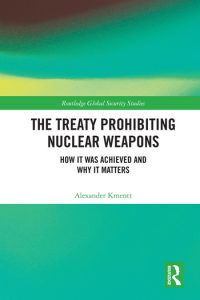 The Treaty Prohibiting Nuclear Weapons: How it was Achieved and Why it Matters
The Treaty Prohibiting Nuclear Weapons: How it was Achieved and Why it Matters
By Alexander Kmentt / Copyright Year 2021
“…An authoritative record of the negotiations and diplomacy behind the Nuclear Weapons Ban Treaty which aims to prohibit the deadliest weapons invented by humankind. Ambassador Alexander Kmentt was at the forefront of the efforts, started over ten years go, to raise awareness of the catastrophic humanitarian and environmental consequences of these weapons. He provides an insightful account of how a small group of countries, supported by civil society, overcame the opposition by major nuclear weapon states…”
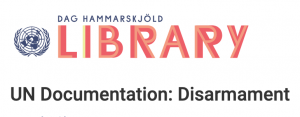
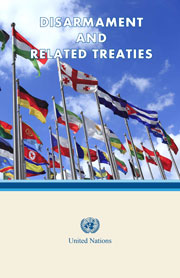
Disarmament and Related Treaties
Published 4 December 2014 by The United Nations Office for Disarmament Affairs, this publication contains the text of multilateral treaties that focus on nuclear weapons, and nuclear-weapon-free zones and other disarmament treaties.
PDF version available online here
Nuclear Ban Treaty
Reaching Critical Will Twitter feed
Treaty on the Prohibition of Nuclear Weapons (PDF)
International Campaign to Abolish Nuclear Weapons
ICAN has posted a Flickr album of annotated photos of the UN Ban Treaty negotiations.
The Ban Treaty achievement was preceded by the three Conferences on the Humanitarian Impacts of Nuclear Weapons.
The Urgency of Banning Nuclear Weapons
Quotes
James Doyle
“Many citizens, scientists and laymen alike, view nuclear-weapons abolition as an essential milestone in the development of human civilization, a moral, ideological and practical campaign that could catalyze the transformation of international relations and improve the outlook for civilization at a critical time.”

